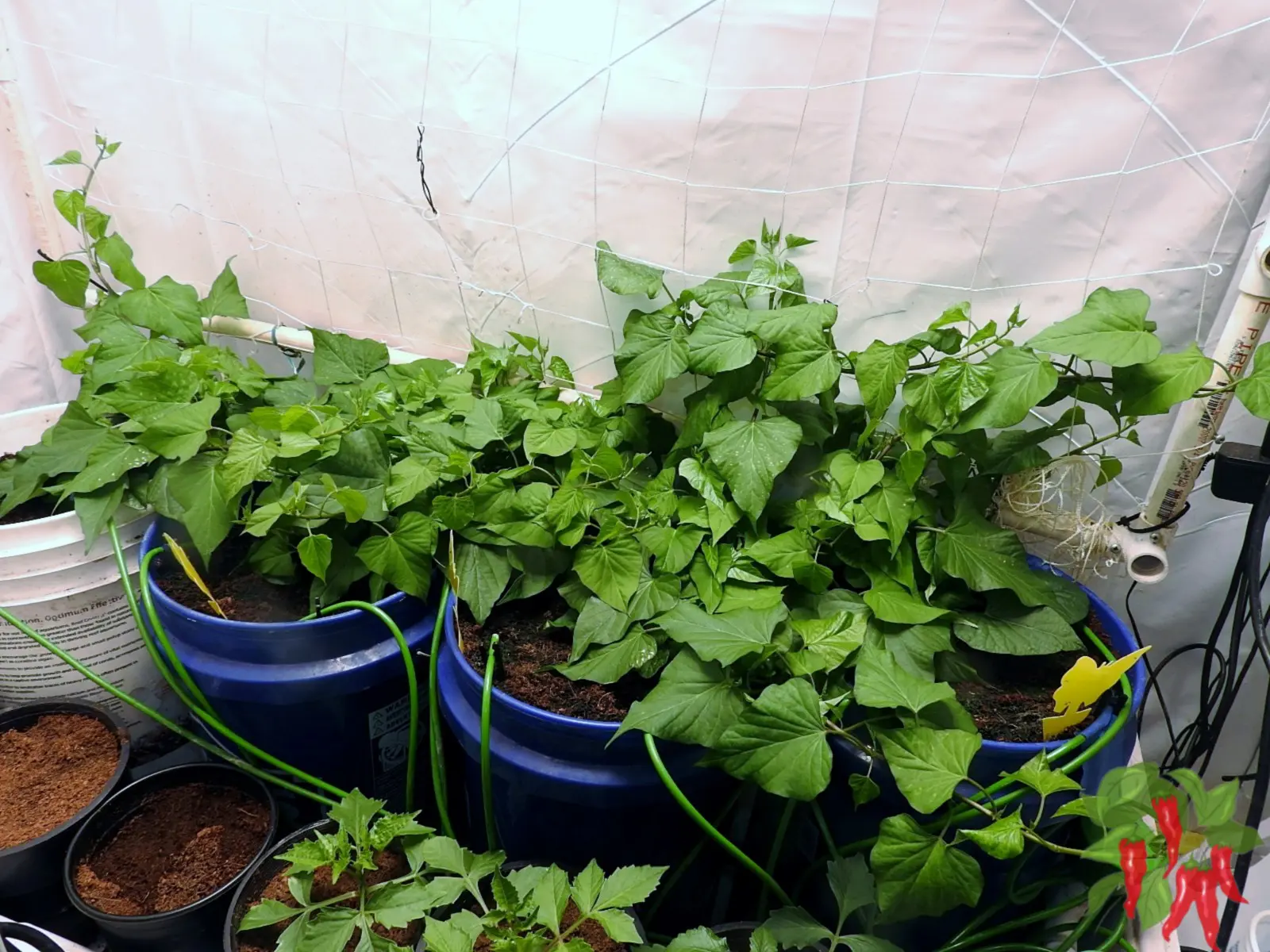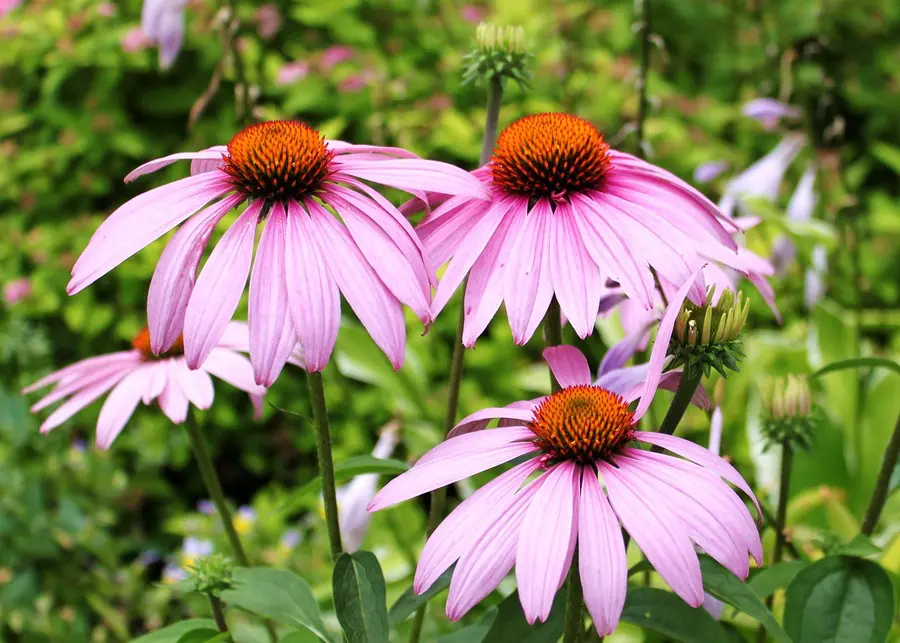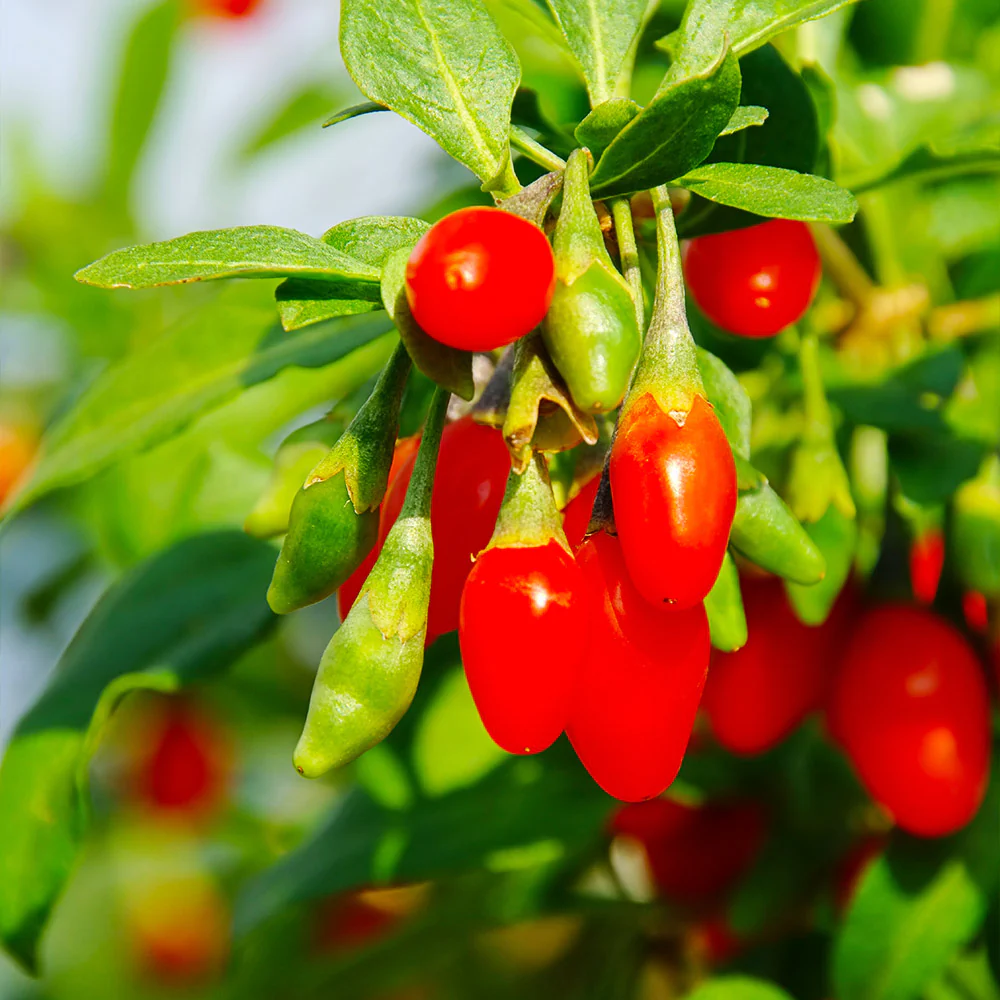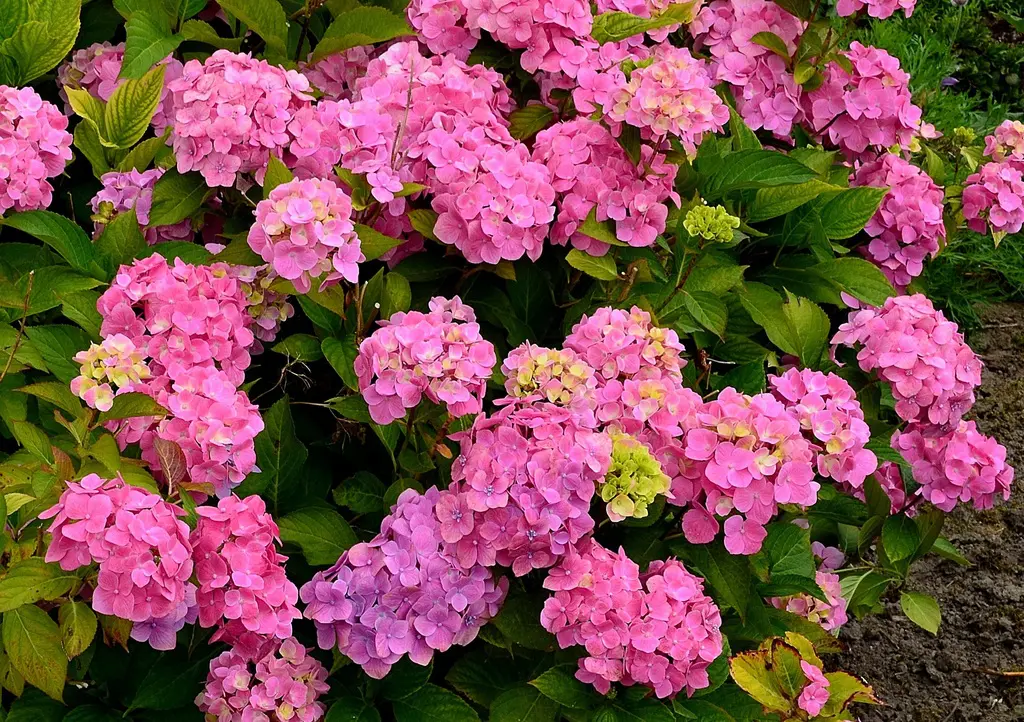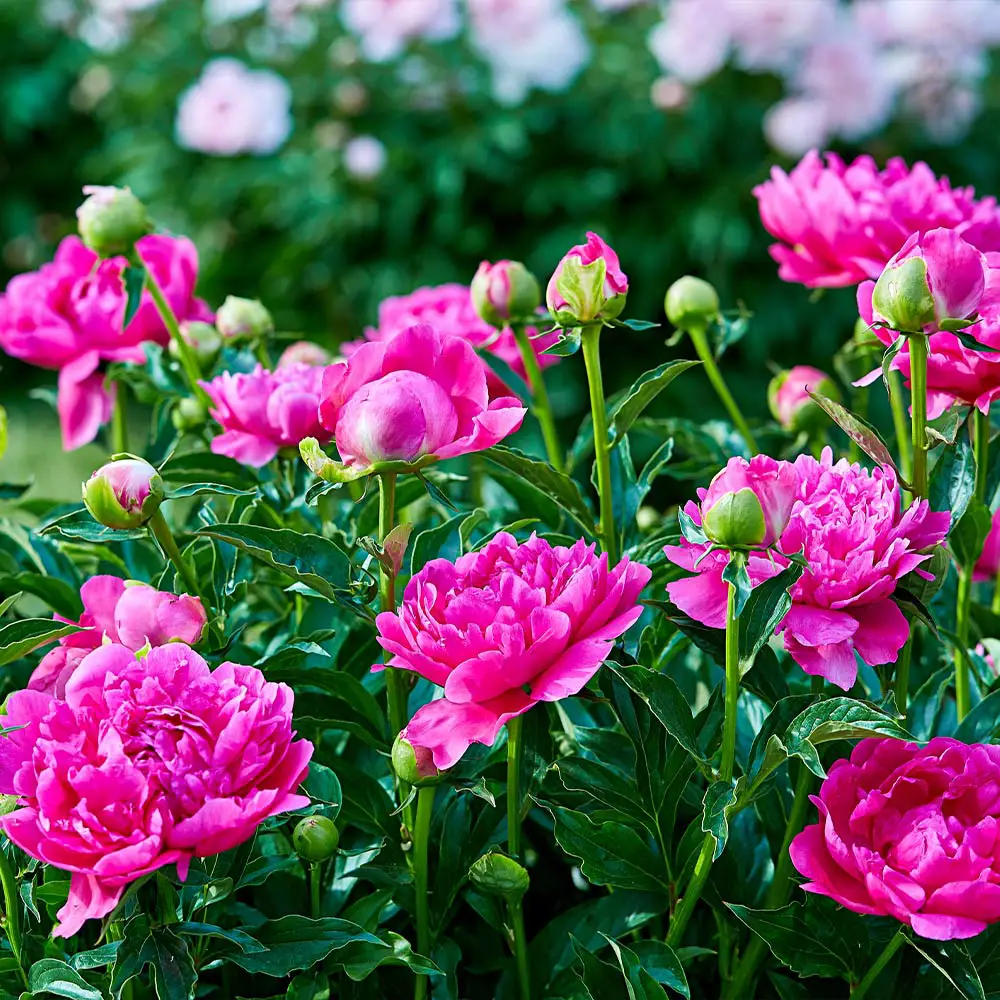This post contains affiliate links. If you buy something from one of our links we may earn a commission. Thanks
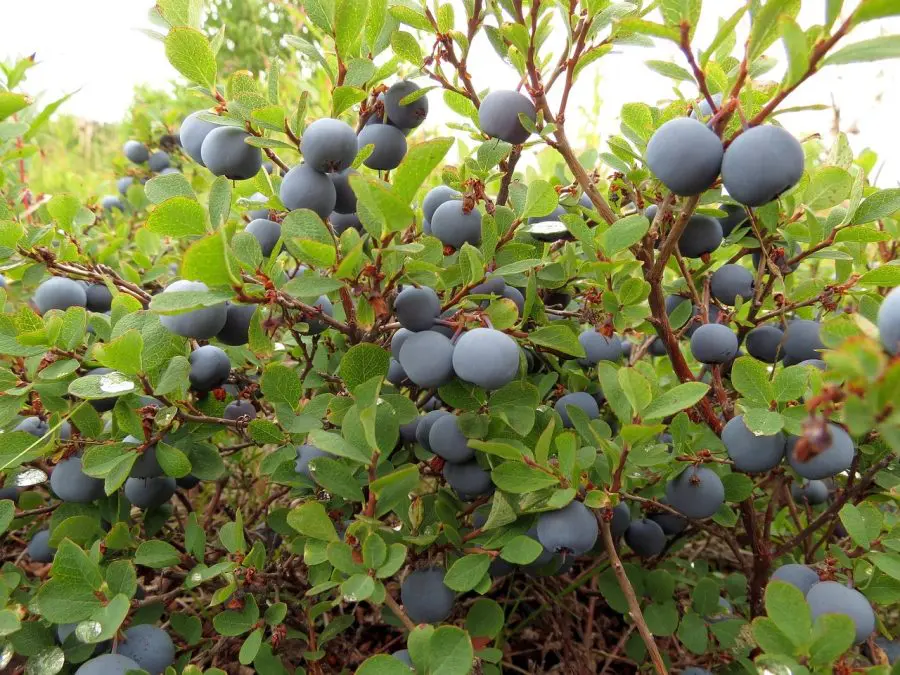
Discover the joy of growing blueberries in 5-gallon buckets! Our guide makes it easy to cultivate your own luscious berries at home, even in small spaces.
Growing Blueberries in 5-gallon buckets is an efficient way to manage space and soil acidity. Use a well-draining, acidic potting mix with a pH of 4.5-5.5. Ensure the bucket has drainage holes, and place it in a location receiving full sun. Water regularly to keep the soil consistently moist.
Isn’t it a delight to pluck fresh blueberries straight from your own garden?
But what if space is a constraint, or you don’t have a garden at all?
That’s where growing blueberries in five-gallon buckets come into play.
This efficient, space-saving gardening technique allows anyone to enjoy the thrill of harvesting their own vibrant, tasty berries.
Regardless of whether you live in a rural farmstead or a high-rise apartment, a 5-gallon bucket can become the best way to your personal mini-blueberry farm.
Let’s dig in and explore this fascinating way to grow blueberries!
Growing Blueberries In 5-Gallon Buckets
Do you know the best part about blueberries? Besides their delightful taste and nutritional benefits, these tiny fruits are incredibly versatile.
They can thrive in various settings, even in a 5-gallon bucket in your own home!
Our focus in this post is to introduce you to the intriguing world of growing blueberries in 5-gallon buckets.
We’ll be answering your burning questions, like, do blueberries grow well in containers? What size container is ideal? Can you really grow a full-fledged blueberry bush in a bucket?
Even more, we’ll be discussing the option of dwarf blueberries, specially designed for limited spaces.
This comprehensive guide aims to equip you with all you need to transform your humble 5-gallon bucket into a thriving blueberry farm. Let’s embark on this exciting gardening adventure together!
Do blueberries grow well in containers?
Absolutely! Blueberries can indeed thrive in containers when given the proper care and conditions.
While they naturally grow in the ground, container gardening provides an excellent alternative for those with limited garden space or unsuitable soil conditions.
It allows you to control the growing environment more effectively, ensuring optimal conditions for your blueberry bushes.
What size container do you need to grow blueberries?
When it comes to container size, a general rule of thumb is to aim for a minimum of 5 gallons.
Blueberries have fine shallow root systems. This size provides enough room for the blueberry bush to develop a healthy root system.
However, if you have the space and resources, opting for larger containers is even better.
A larger container allows for better root development and gives the blueberry bush more room to spread its roots and grow to its full potential.
Can you grow a blueberry bush in a 5-gallon bucket?
Absolutely! A 5-gallon bucket is a suitable size for growing certain dwarf blueberry varieties.
These dwarf varieties make compact bushes and are specifically bred to thrive in containers, making them a perfect choice for container gardening.
The smaller size of the bush is ideal for the limited space of a 5-gallon bucket, and they can still produce a good yield of delicious blueberries.
It should go without saying that you only want a single plant in each container.
Dwarf blueberries for 5-gallon buckets
When selecting blueberry different varieties for 5-gallon buckets, consider choosing dwarf cultivars that are well-suited for container cultivation and your 5-gallon bucket garden.
Varieties like ‘Top Hat’ or ‘Sunshine Blue’ are excellent options. ‘Top Hat’ is a dwarf blueberry that reaches a maximum height of about 2 feet, making it perfect for smaller containers.
‘Sunshine Blue’ is another popular dwarf variety known for its compact size and abundant harvest of flavorful berries.
Sunshine Blue Semi-Dwarf Blueberry
These dwarf blueberries are not only beautiful ornamental plants but also productive fruit-bearing bushes, providing a delightful addition to your container garden.
What is the difference between high and low-bush blueberries?
The main difference between highbush and lowbush blueberries lies in their growth habits, size, and preferred growing conditions. Here are some key distinctions:
Growth Habit: Highbush blueberries (Vaccinium corymbosum) grow as upright bushes, typically reaching heights of 4 to 8 feet.
They have a more structured and compact growth habit, making them easier to maintain and harvest.
Lowbush blueberries (Vaccinium angustifolium), on the other hand, have a spreading growth habit and form dense mats or carpets. They typically grow up to 1 to 2 feet in height.
Size of Fruit: Highbush blueberries generally produce larger berries compared to lowbush blueberries.
The berries of highbush varieties are usually plump and juicy, while lowbush blueberries tend to be smaller in size but packed with intense flavor.
Preferred Growing Conditions: Highbush blueberries are more adaptable to a wide range of climates and are commonly grown in home gardens and commercial farms.
They thrive in areas with cold climates and milder summers. Lowbush blueberries are native to colder regions, such as Canada and the northeastern United States.
They are an excellent choice for these areas. They require colder climates, with a sufficient amount of winter chilling hours to break dormancy and ensure proper fruit production.
Harvesting Methods: Highbush blueberries are typically harvested by hand, as their upright growth habit allows for easier access to the fruit.
Lowbush blueberries are often harvested using a technique called raking, where a specialized rake or comb is gently pulled through the plants to collect the ripe berries.
Both highbush and lowbush blueberries offer their own unique characteristics and advantages.
Your choice between the two may depend on the available growing conditions, desired fruit size, and personal preferences.
Growing Blueberries In Containers
Ready to start your container blueberry garden? Let’s dive into the nitty-gritty details of growing blueberries in containers.
We’ll explore the ideal bush size, light requirements, watering tips, perfect potting mix, and so much more.
Not to forget, we’ll also cover the best containers and fertilizing techniques to help your blueberry bush reach its full potential.
With these insights, you’ll be on your way to enjoying fresh, homegrown blueberries in no time!
Blueberry Bush Size: From Mini to Mighty
Blueberries come in all sizes. Dwarf blueberry varieties like ‘Top Hat’ or ‘Sunshine Blue’ stay cozy between 1-2 feet tall and are ideal for container gardening.
However, if you’re up for a bigger challenge, standard varieties can reach up to a lofty 6 feet!
Blueberry Light Requirements: Sunshine Lovers
Blueberries adore sunlight! To keep them happy and healthy, ensure they bask in full sun for at least six to eight hours daily.
The more sun they get, the sweeter your blueberries will be.
Watering Blueberry Bushes: Consistency is Key
Watering is essential for any plant, and blueberries are no exception.
They prefer soil that’s consistently moist but not waterlogged. Balance is crucial, too dry or too wet, and your plant might struggle.
Blueberry Potting Mix: Perfect Soil Recipe
For your blueberries to thrive, you need the right potting mix. Our recommended recipe?
Two parts coir, two parts sphagnum peat moss, and one part perlite. Adding a bit of acidic compost like pine needles if available, can also give your blueberries an extra boost.
Don’t confuse potting soil with garden soil they are not the same.
Don’t be tempted to use garden soil it will compact too much in pots and may contain pests or diseases.
Blueberry Pot Size: Room to Grow
When it comes to choosing a pot for your blueberries, bigger is usually better.
Aim for a minimum of 5 gallons. The larger, the better to allow robust plant growth.
Best Container for Blueberry Bushes: It’s All About Drainage
A good container for blueberries should offer plenty of drainage and sufficient depth for root expansion.
So, whether it’s a terracotta pot or a wooden barrel, as long as it meets these requirements, your blueberries will be happy.
Fertilizing Blueberry Bushes: Feeding Acid-Loving Plants
Blueberries are acid-loving plants and prefer a soil pH of 4.2-5.0 and will appreciate a fertilizer high in ammonium nitrogen.
Feed them appropriately, and they’ll reward you with a bountiful harvest.
Blueberry Bush Temperature and Humidity: Cool and Comfortable
Blueberries prefer cooler climates and perform best in temperatures between 60 and 75°F.
They also enjoy a medium level of humidity. Blueberries are typically grown in northern climates with cool temperatures and high-humidity areas.
So, if you live in warm climates or a particularly hot region, consider placing them in a spot where they can enjoy some afternoon shade.
Blueberry Bush Maintenance
Alright, now that you’re equipped with the basics of growing blueberries in containers, it’s time to dive into the nitty-gritty—maintenance.
Don’t worry, while it may sound like a lot, taking care of your blueberry bushes is as rewarding as it is essential.
This section will guide you through the ins and outs of pruning, repotting, and general upkeep to ensure your blueberry plants thrive and produce plenty of delicious fruit.
Let’s get those green thumbs to work!
Pruning Blueberry Bushes: When and How?
You might be surprised to learn that pruning your blueberry bush is a key element in encouraging more fruit production.
Pruning is best done in late winter or early spring when the plants are still dormant.
Start this after the first year of growth. Here’s a simplified guide:
• Remove any dead or diseased branches They can be detrimental to the overall health of the plant.
• Trim off low growth that would touch the ground when loaded with fruit.
• Remove short, soft shoots that come up from the base of the plant. These won’t produce fruit.
• Aim to keep about 6-8 of the most vigorous shoots and prune out the others to ensure ample light and airflow.
• With regular pruning, you’re encouraging your blueberry bush to focus its energy on fruit production, which means a higher yield of berries for you to enjoy.
• Remove dead or weak branches, typically in late winter or early spring.
Repotting blueberry bushes
When it comes to growing blueberry bushes, repotting becomes necessary at times to ensure their continued health and growth.
Repotting involves transferring the blueberry plant from its current container to a larger one, providing the roots with more room to spread and access essential nutrients.
Signs that indicate repotting is needed include root-bound growth, reduced growth or nutrient deficiency, and watering issues.
By repotting your blueberry bush at the right time and following proper techniques, you can promote optimal root development and ensure a thriving and productive plant.
Let’s explore the process of repotting blueberry bushes in more detail to help you give your beloved blueberry plants the space they need to flourish.
Repotting depends on growth, but is needed typically every 2-3 years, or when the plant outgrows its container.
Signs that indicate repotting is needed:
Root Bound: If you notice the roots of your blueberry bush growing densely and tightly packed within the container, it’s a clear sign that it has outgrown its current pot and requires repotting.
Reduced Growth or Nutrient Deficiency: If your blueberry bush is showing stunted growth, smaller leaves, or signs of nutrient deficiency despite proper care and fertilization, it may be a result of the roots being overcrowded and lacking space to access necessary nutrients.
Watering Issues: If the soil in the container dries out too quickly or remains excessively wet, it could be an indication that the roots have occupied most of the container space, reducing water absorption and proper drainage.
Steps for repotting your blueberry bush:
Choose the Right Time: The ideal time to repot your blueberry bush is during the dormant season in late winter or early spring before new growth begins.
Select a Larger Container: Choose a new container that is one size larger than the current one to allow the roots to spread and grow. Ensure the new container has sufficient drainage holes.
Prepare the Potting Mix: Create a well-draining and acidic potting mix suitable for blueberries. Use a blend of peat moss, perlite, and acidic compost to provide the ideal growing medium.
Remove the Blueberry Bush: Carefully remove the blueberry bush from its current container, gently loosening the roots if they are tightly packed.
Prune the Roots: If the roots are excessively long or tangled, you can prune them slightly to promote new growth and encourage better root development.
Place in the New Container: Position the blueberry bush in the center of the new container, ensuring it is at the same depth as it was in the previous pot.
Fill with Potting Mix: Fill the container with the prepared potting mix, gently pressing it around the roots to secure the plant in place.
Water Thoroughly: After repotting, water the blueberry bush thoroughly to settle the soil and provide hydration to the roots.
Resume Care: Place the repotted blueberry bush in a suitable location with adequate sunlight and continue providing regular care, including proper watering, fertilizing, and pruning as needed.
Remember, repotting is an essential step in maintaining the health and vitality of your blueberry bush.
By providing it with a larger container and fresh potting mix, you ensure the plant has enough space and nutrients to thrive and produce an abundant harvest.
Propagating Blueberry Bushes
Who wouldn’t want to share the joy of growing their own blueberries?
Whether you’re looking to expand your blueberry garden or share your favorite plant with friends, propagation is the way to go!
It may sound like a fancy term, but propagating is simply the process of creating new plants from the ones you already have.
It’s a journey of patience, but by the end, you’ll have the satisfaction of seeing a new blueberry bush spring to life. Ready to get started?
Let’s dive into the two primary methods of propagating blueberry bushes: rooting cuttings and growing from seed.
Rooting Blueberry Cuttings: The Quick Start to New Plants
Creating a new blueberry bush from cuttings is an exciting way to expand your berry garden.
It’s simpler than it sounds. Just take a cutting from a healthy blueberry plant during the early summer.
• Look for a vigorous branch that’s free of any disease or pests. A piece about 4 to 6 inches long would do the trick.
• Once you have your cutting, plant it in a mixture of peat and perlite.
• This ensures the cutting has the ideal growing conditions to start setting roots.
• In a few weeks, you’ll start to see the first signs of a brand new blueberry bush!
Patience is key here; nurture it with love and it’ll reward you with delicious blueberries.
Growing Blueberry from Seed: A Journey of Patience
Starting a blueberry bush from seed is a journey, but the reward of seeing a plant you’ve nurtured from a tiny seed is hard to match.
First, you’ll need to stratify the seeds. This process, involving a period of cold treatment, mimics the natural winter conditions and helps the seed to germinate.
Once stratified, plant your seeds in an acidic soil mix, similar to what mature blueberry plants prefer.
Keep the soil consistently moist and provide plenty of light.
Remember, growing blueberries from seed requires a lot of patience; it can take a few months to a couple of years to produce the first fruit.
But trust me, biting into that first homegrown blueberry will make all the patience worth it!
Step-by-Step Guide to Rooting Blueberry Cuttings
Choose the Right Plant and Branch: Choose a healthy blueberry plant free from any signs of disease or pests. You’ll want to take a cutting from a fresh, vigorous branch.
Take the Cutting: Early summer is an ideal time to take your cuttings. Using a sharp, clean knife or pruners, cut a branch that is about 4-6 inches long. Aim to make the cut just below a leaf node (the point where a leaf attaches to the stem).
Prepare the Cutting: Remove the leaves from the lower half of the cutting, leaving only a few at the top. This encourages the cutting to focus its energy on developing roots.
Rooting Hormone: While this step is optional, you can dip the cut end of the stem in rooting hormone to increase the chances of successful rooting.
Plant the Cutting: Plant the cut end into a container filled with a mixture of peat and perlite. The mixture should be damp, but not waterlogged.
Caring for the Cutting: Place the container in a warm location with plenty of indirect light. Keep the soil consistently moist, but avoid overwatering which could lead to rot.
Wait for Roots to Develop: After a few weeks, gently tug on the cutting. If it resists, roots have likely started to form. Be patient – this process can take a few weeks to a couple of months.
Transplant the Cutting: Once a robust root system has developed, you can transplant the new blueberry bush into a larger container or into the ground, depending on your preference.
Care for Your New Plant: Continue to care for your new blueberry plant as you would any other, ensuring it has the right light, water, and nutrient conditions to thrive.
And voila! You’ve successfully propagated a blueberry bush from cuttings.
Enjoy this exciting journey in expanding your homegrown fruit garden!
Blueberry Bush Problems
So, you’ve gotten the hang of growing blueberries in 5-gallon buckets and are enjoying the fruits of your labor.
But wait! Even in the best of conditions, blueberries can face certain problems.
From pesky pests to menacing diseases, these can pose challenges to your green thumb journey.
In this section, we’ll dive into some of these common problems, helping you understand and address them.
Let’s ensure that your blueberry bushes continue to thrive and yield those juicy berries you’re so eagerly looking forward to!
Battling Blueberry Pests and Diseases
Blueberries, like all plants, can sometimes fall victim to pests and diseases. Let’s take a quick look at a few common threats and their symptoms:
Aphid Attack: Aphids are tiny insects that suck sap from blueberry plants, causing the leaves to curl and stunt growth. If you notice a sticky substance on the leaves, it’s probably aphid honeydew. Combat them with a natural insecticidal soap or introduce beneficial insects like ladybugs and lacewings that love to feast on aphids!
Bird Damage: Birds love blueberries just as much as we do! Netting your plants can help to protect your ripe berries from becoming a bird buffet.
Mummy Berry Disease: This fungal disease causes the berries to shrivel and drop prematurely, resembling little mummies. Pruning and destroying infected plant parts can help control this disease.
Powdery Mildew: This fungus causes a white, powdery coating on the leaves and fruit. It can be prevented by ensuring good air circulation and treating it with a fungicide if needed.
Remember, a well-cared-for blueberry bush is the first line of defense against these issues.
But if problems arise, catching them early will make treatment more effective. You’re doing a great job as a blueberry grower, keep it up!
How you can treat each problem:
Aphids: One of the most common natural treatments for aphids is a simple solution of water and dish soap.
Spray this on your plants and the aphids should start to disappear.
If the infestation is heavy, you might consider using an organic insecticidal soap or neem oil spray.
Additionally, introducing beneficial insects, such as ladybugs or lacewings, can help control the aphid population as they are natural predators.
Bird Damage: The best treatment for bird damage is prevention.
Use bird netting or garden fleece to protect your blueberries when they start to ripen.
Scare tactics, such as using bird scarers or shiny, reflective objects can also deter birds.
Mummy Berry Disease: For mummy berry disease, the best treatment is prevention.
Good sanitation is key. Remove and destroy all mummified berries from the previous growing season, as these can harbor the disease.
If the disease is spotted, applying a fungicide during flowering can help to control its spread.
Powdery Mildew: If powdery mildew appears, ensure your plant has adequate airflow and isn’t overcrowded.
Pruning can also help improve air circulation. Organic treatments include applying sulfur or a baking soda solution (1 tablespoon of baking soda and 1/2 teaspoon of liquid soap to 1 gallon of water).
Remember, it’s easier to prevent these problems rather than treat them, so keep an eye on your plants and intervene at the first sign of trouble!
Growing Blueberries In Pots FAQ
You’re already on your way to becoming a proficient blueberry grower, but you might still have a few questions bouncing around your mind.
Don’t worry, that’s what this section is for! This FAQ section will tackle some of those burning questions you may have about growing blueberries in 5-gallon buckets.
We’ll dive into those questions that didn’t quite fit into the previous sections but are still super important for your blueberry growing journey.
So, stick with me, and let’s find the answers you’ve been looking for!
Q: Do blueberries grow well in containers?
A: Absolutely! With the right care and conditions, blueberries can thrive in containers. This is great news if you’re short on garden space.
Q: What size container do you need to grow blueberries?
A: You’ll want to aim for at least a 5-gallon container to provide enough room for your blueberry bush to develop a healthy root system. Remember, the larger the container, the bigger and more robust your bush can grow.
Q: Can you grow a blueberry bush in a 5-gallon bucket?
A: Yes, you can! A 5-gallon bucket is quite suitable for growing a dwarf blueberry variety. Just make sure you provide good drainage and the right soil mix for optimal growth.
Q: How do you winterize blueberries in pots?
A: Winterizing your blueberries involves mulching the top of the pot to protect the root system from freezing temperatures. Also, consider moving the pots to a sheltered location, like a garage or a shed, during the coldest months.
Q: Do I need to cover my blueberries for winter?
A: If you live in a region with harsh winters, it can be a good idea to cover your blueberry bushes. Use a breathable material like burlap to wrap around the bush, protecting it from drying winds and severe cold.
Q: Do you cut back blueberries in winter?
A: While blueberries don’t require heavy pruning, you can lightly trim them back in late winter or early spring. Remove dead or diseased branches, and cut back a few of the oldest canes to ground level to encourage new growth.
Growing Blueberries In 5-Gallon Buckets Final Thoughts
Alright, we’re nearing the end of our blueberry-growing journey! It’s been quite an adventure, hasn’t it?
We’ve learned about the joys and challenges of growing blueberries in 5-gallon buckets, and covered everything from the initial planting to maintenance and dealing with common issues.
But remember, this is just the starting point. The beauty of gardening is that there’s always more to learn and experiment with.
Let’s wrap things up and reflect on what we’ve discovered.
Recap of how to grow blueberries in pots
In conclusion, growing blueberries in 5-gallon buckets is not only possible but also a rewarding venture.
We’ve walked through every step of the process, starting with selecting the right container and variety of blueberries, to understanding their sunlight, watering, and soil needs.
We discussed the importance of regular maintenance like pruning and repotting and didn’t shy away from potential problems such as pests and diseases, offering practical solutions for each.
Propagation was another key topic we delved into, demonstrating that you can expand your blueberry garden through stem cuttings and seeds.
And let’s not forget about winterizing these resilient bushes, a crucial step to ensure their survival through colder months.
Give growing blueberries in pots a try
What’s remarkable about this process is how much control you have over your blueberry bushes when growing them in containers.
It may seem challenging at first, but with patience and care, anyone can become a successful blueberry grower.
So now, it’s your turn! Your blueberry-growing journey is ready to start.
Armed with this knowledge, we encourage you to step out and give it a shot. Happy gardening!











